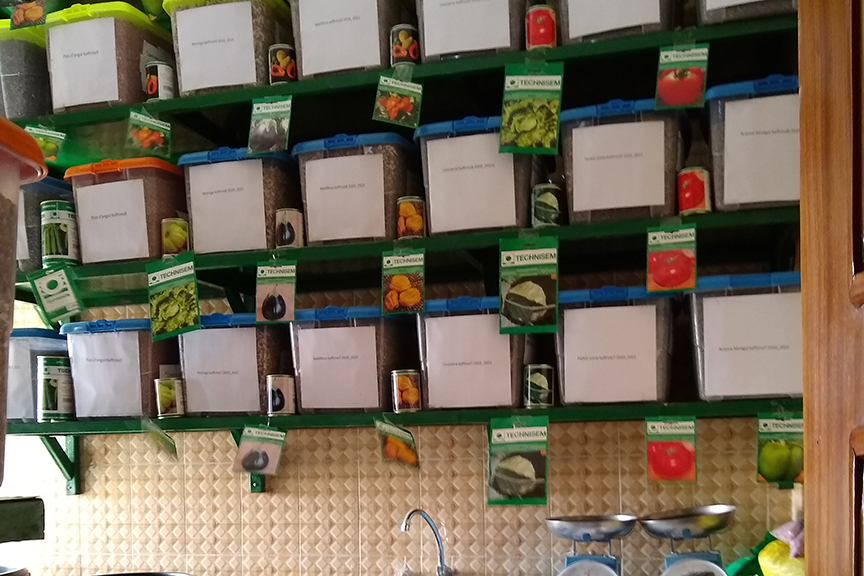Seed Bank - - storage method
December 9, 2020
Definition: A temperature and moisture-controlled space designated for long-term seed storage, maintaining seed viability for future use.
A Closer Look: Collecting and saving seeds, either as an individual farmer, as a farmer group, or as an organization, is much less expensive than regularly purchasing seeds and creates greater freedom to grow and develop Forest Garden nurseries and crops. At Trees for the Future, seed banks have allowed for thousands of dollars in savings. The team purchases seeds off-season when they are significantly cheaper and stores them for farmer use when they're needed.
Tips For A Successful Seed Bank: Seed banks can have huge economic advantages and make it easier for a farmer or group of farmers to get the seeds they need, when they need them. However, there are a few elements that must be considered in order to ensure the seeds remain viable and the species stay organized.
Temperature-Controlled Space
One of the most important things to consider when choosing the area for your seed bank will be the enclosure. It is important that the seed bank be indoors so that temperatures stay cool and seeds remain viable. At TREES' seed bank in Kaffrine, Senegal, we try to keep the temperature of our seed bank to 16 Degrees Celsius using air conditioning. This ensures the seed bank does not reach temperatures that could activate germination in certain seeds.
Low-Moisture Environment
In addition to needing to keep temperatures cool in a seed bank, it is important that the seeds are stored in a low-moisture environment. Humidity can spoil viability for most seeds (the exception is recalcitrant seeds which require a little moisture content).
Proper Labeling
Finally, to avoid any potential errors when storing seeds in a seed bank, it is extremely important to label your seeds and their respective containers. Labels should include the species, the date it was collected, as well as its source.

 United States
United States
Comments